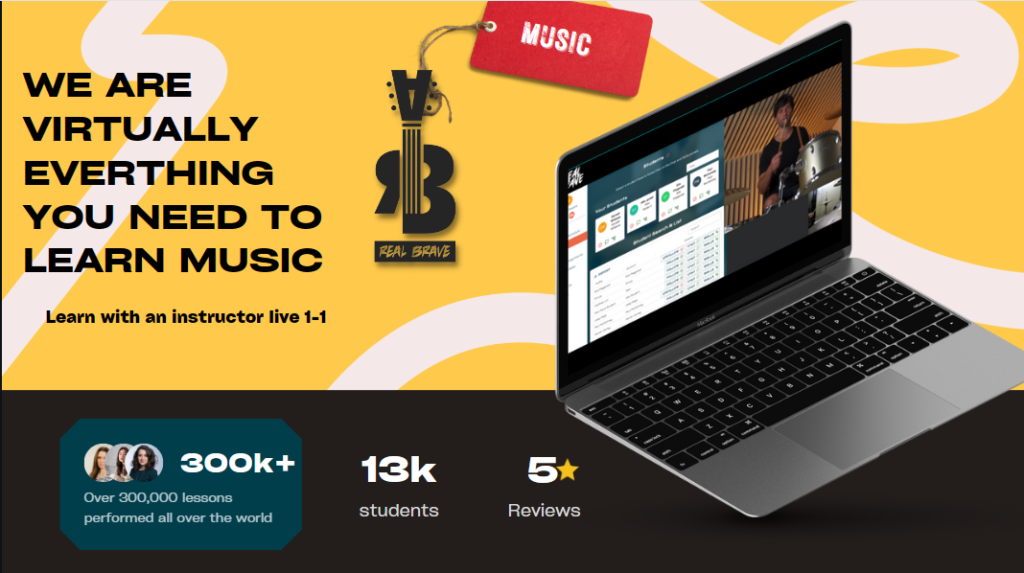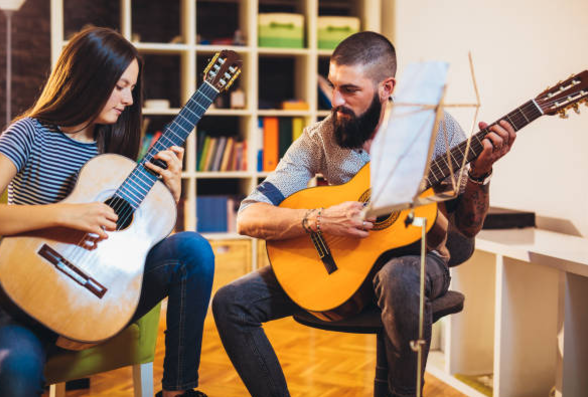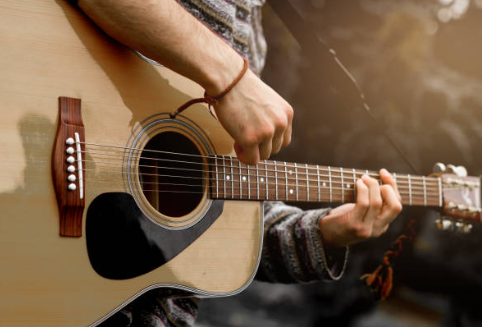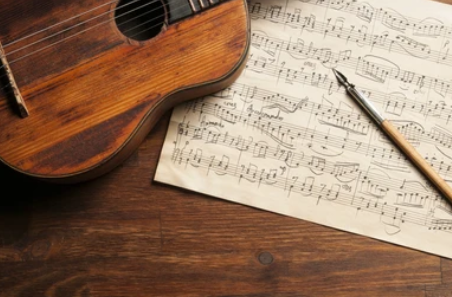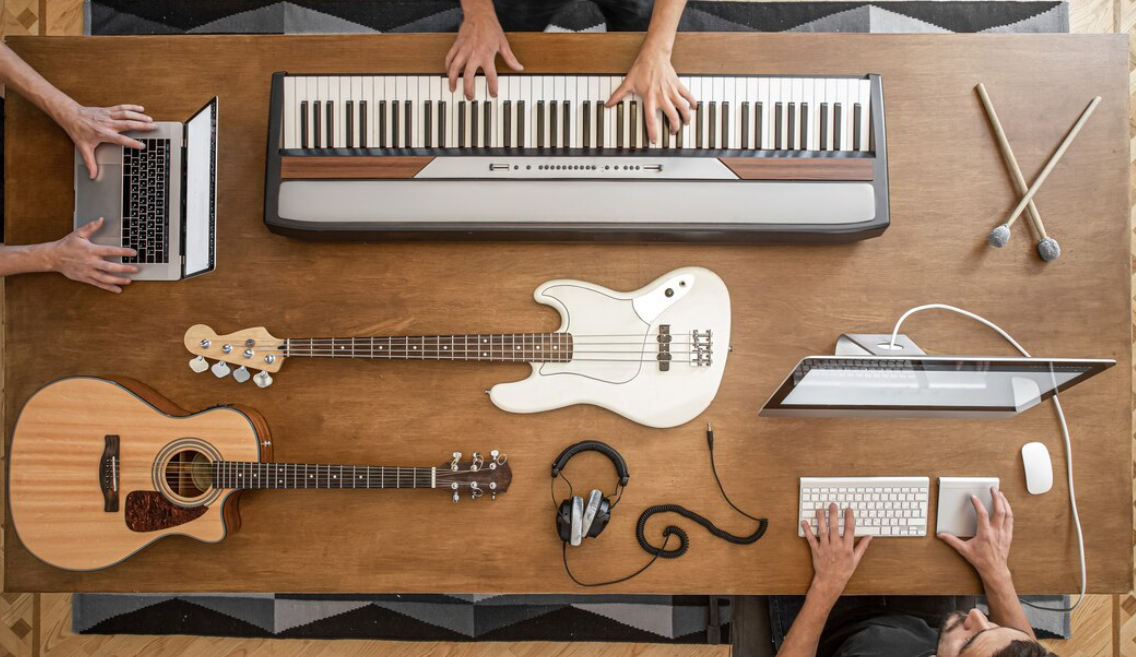Easy Ways To Play The E Flat Minor Pentatonic Scale
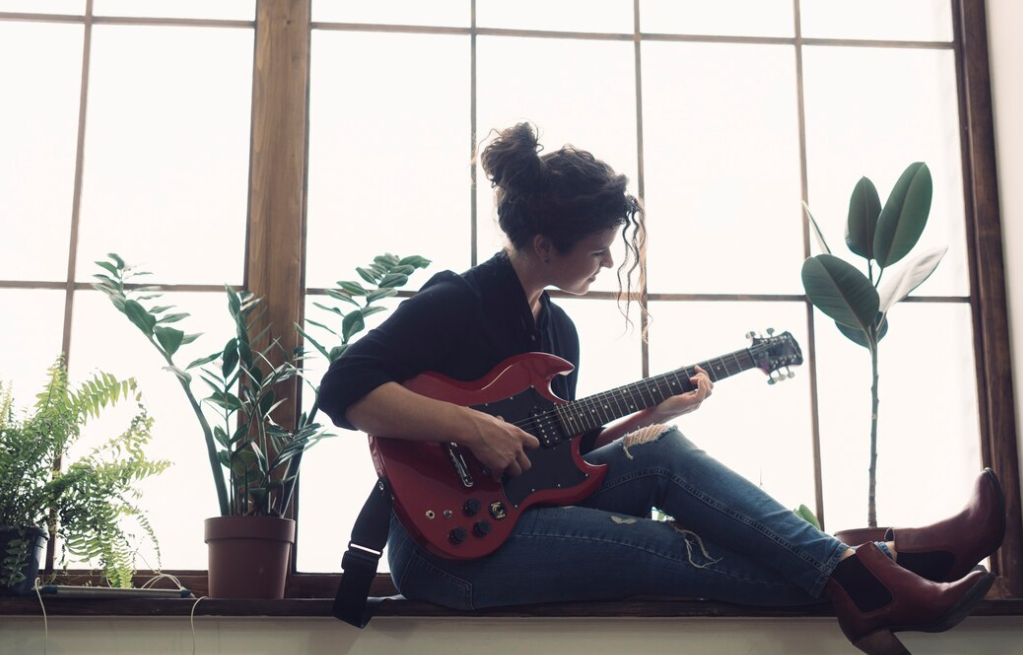
The E♭ Minor Pentatonic Scale is a versatile and essential scale for guitarists, especially those delving into blues, rock, and jazz. It’s a five-note scale that omits the second and sixth degrees of the natural minor scale, giving it a distinct and melodically rich sound.
In this blog, we’ll break down the scale, show you how to play it across the fretboard and provide some tips for incorporating it into your playing.
Understanding the E♭ Minor Pentatonic Scale
The E♭ Minor Pentatonic Scale consists of the following notes:
- E♭ (Root)
- G♭ (Minor Third)
- A♭ (Perfect Fourth)
- B♭ (Perfect Fifth)
- D♭ (Minor Seventh)
This scale pattern can be moved across the fretboard, but for now, let’s focus on the most common position.
The E♭ Minor Pentatonic Scale Positions
Let’s learn how to play the E♭ Minor Pentatonic Scale in 5 different positions on your guitar:
11th Position
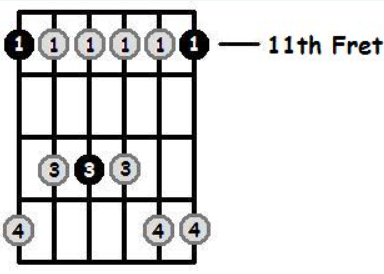
- Starting on the Low E String: Begin with your index finger on the 11th fret (E♭) and your pinky on the 14th fret (G♭).
- A String: Place your index finger on the 11th fret (A♭) and your ring finger on the 13th fret (B♭).
- D String: Place your index finger on the 11th fret (E♭) and your ring finger on the 13th fret (G♭).
- G String: Place your index finger on the 11th fret (A♭) and your ring finger on the 13th fret (B♭).
- B String: Place your index finger on the 11th fret (D♭) and your pinky on the 14th fret (E♭).
- High E String: Place your index finger on the 11th fret (G♭) and your pinky on the 14th fret (A♭).
1st Position

- Low E String (6th String): Place your index finger (1) on the 11th fret (E♭) and your pinky finger (4) on the 14th fret (G♭).
- A String (5th String): Place your index finger (1) on the 11th fret (A♭) and your ring finger (3) on the 13th fret (B♭).
- D String (4th String): Place your index finger (1) on the 11th fret (E♭) and your ring finger (3) on the 13th fret (G♭).
- G String (3rd String): Place your index finger (1) on the 11th fret (A♭) and your ring finger (3) on the 13th fret (B♭).
- B String (2nd String): Place your index finger (1) on the 11th fret (D♭) and your pinky finger (4) on the 14th fret (E♭).
- High E String (1st String): Place your index finger (1) on the 11th fret (G♭) and your pinky finger (4) on the 14th fret (A♭).
3rd Position
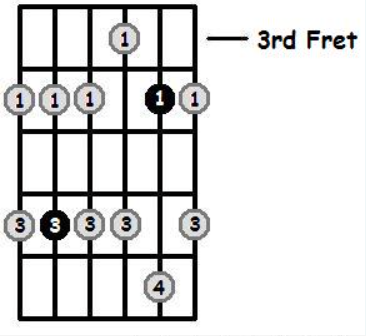
- Low E String (6th String): Place your index finger (1) on the 3rd fret (G) and your ring finger (3) on the 6th fret (B♭).
- A String (5th String): Place your index finger (1) on the 3rd fret (C) and your ring finger (3) on the 6th fret (E♭).
- D String (4th String): Place your index finger (1) on the 3rd fret (G) and your ring finger (3) on the 5th fret (A♭).
- G String (3rd String): Place your index finger (1) on the 3rd fret (C) and your ring finger (3) on the 5th fret (E♭).
- B String (2nd String): Place your index finger (1) on the 4th fret (G♭) and your pinky finger (4) on the 6th fret (A♭).
- High E String (1st String): Place your index finger (1) on the 3rd fret (G) and your ring finger (3) on the 6th fret (B♭).
6th Position

- Low E String (6th String): Place your index finger (1) on the 6th fret (A♭) and your pinky finger (4) on the 9th fret (B♭).
- A String (5th String): Place your index finger (1) on the 6th fret (E♭) and your pinky finger (4) on the 9th fret (G♭).
- D String (4th String): Place your index finger (1) on the 6th fret (A♭) and your ring finger (3) on the 8th fret (B♭).
- G String (3rd String): Place your index finger (1) on the 6th fret (D♭) and your ring finger (3) on the 8th fret (E♭).
- B String (2nd String): Place your middle finger (2) on the 7th fret (G♭).
- High E String (1st String): Place your index finger (1) on the 6th fret (A♭) and your pinky finger (4) on the 9th fret (B♭).
8th Position
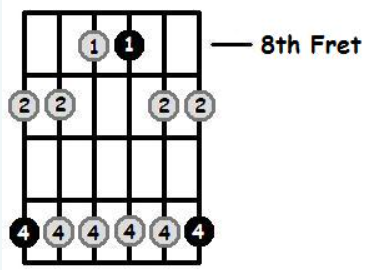
- Low E String (6th String): Place your index finger (1) on the 8th fret (C) and your pinky finger (4) on the 11th fret (E♭).
- A String (5th String): Place your index finger (1) on the 8th fret (G♭) and your pinky finger (4) on the 11th fret (A♭).
- D String (4th String): Place your index finger (1) on the 8th fret (C) and Place your pinky finger (4) on the 11th fret (E♭).
- G String (3rd String): Place your index finger (1) on the 8th fret (G♭) and your ring finger (3) on the 10th fret (A♭).
- B String (2nd String): Place your middle finger (2) on the 9th fret (B♭) and your pinky finger (4) on the 11th fret (D♭).
- High E String (1st String): Place your index finger (1) on the 8th fret (C) and your pinky finger (4) on the 11th fret (E♭).
Tips for Practicing
- Use a Metronome: Start slowly to ensure accuracy, then gradually increase the tempo.
- Alternate Picking: Use alternate picking (down-up-down-up) to build speed and fluidity.
- Play Backwards: Practice the scale descending as well as ascending to build familiarity in both directions.
- Create Melodies: Improvise using the notes of the scale to create your own licks and melodies.
- Incorporate Bends and Slides: Add expressive techniques like bends, slides, and vibrato to make your playing more dynamic.
Applying the Scale
The E♭ Minor Pentatonic Scale can be used over E♭ minor chords and progressions. It’s also a great fit for soloing over blues in E♭ and can be used to add a soulful touch to rock and jazz improvisations. Experiment with integrating it into your playing, and you’ll discover a wide range of musical possibilities.
Mastering the E♭ Minor Pentatonic Scale is a stepping stone to unlocking the expressive potential of the guitar. By practicing this scale in different positions and incorporating it into your solos and improvisations, you’ll enhance your musical vocabulary and develop a more versatile playing style. Happy practicing!
If you’re interested in learning an instrument, at Real Brave, we offer an incredible experience like no other place in music lessons for kids and adults by guiding them from the beginning stages of getting to know an instrument all the way through performing for family and friends on stage. Our instructors come from all over the world, bringing extensive experience on a wide range of instruments. Click below and book a free lesson with us!
Author: Daniel Powers Jr, the founder of Real Brave™, serves as the chief inspiration to thousands of students in the Real Brave music instruction program. He’s also the visionary behind PracticePad™, an online platform for live one-on-one online music lessons, lesson tracking, and scheduling. Beyond his entrepreneurial pursuits, Daniel leads a non-profit organization that provides formerly homeless children with access to music education, making a profound impact on their lives. His unwavering dedication to music, innovation, and education continues to inspire individuals to reach their fullest potential while creating positive change in communities. Follow Real Brave on all the socials:
youtube.com/@realbraveinc
twitter.com/realbraveinc
https://www.tiktok.com/@realbraveinc
instagram.com/realbraveaudio
facebook.com/realbraveinc
